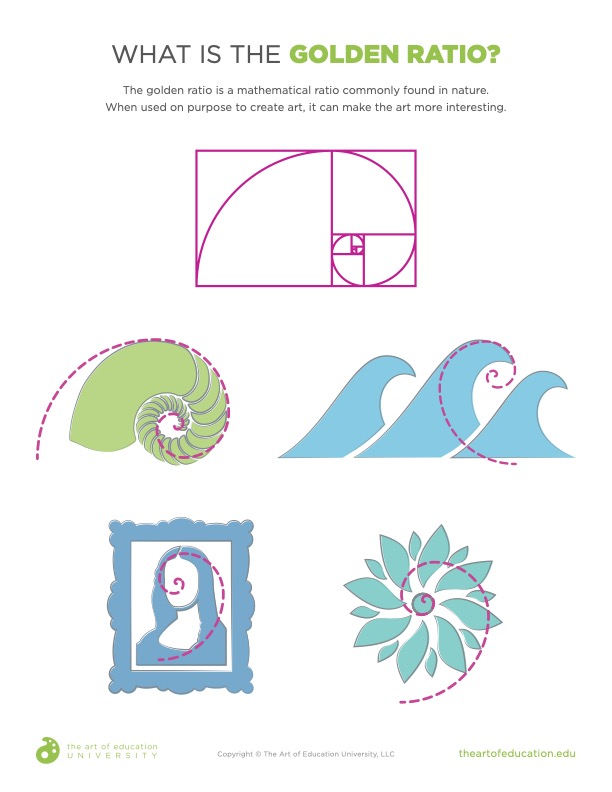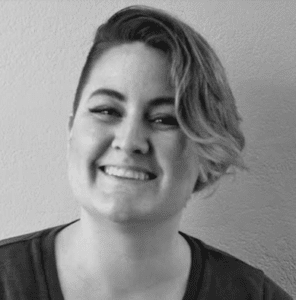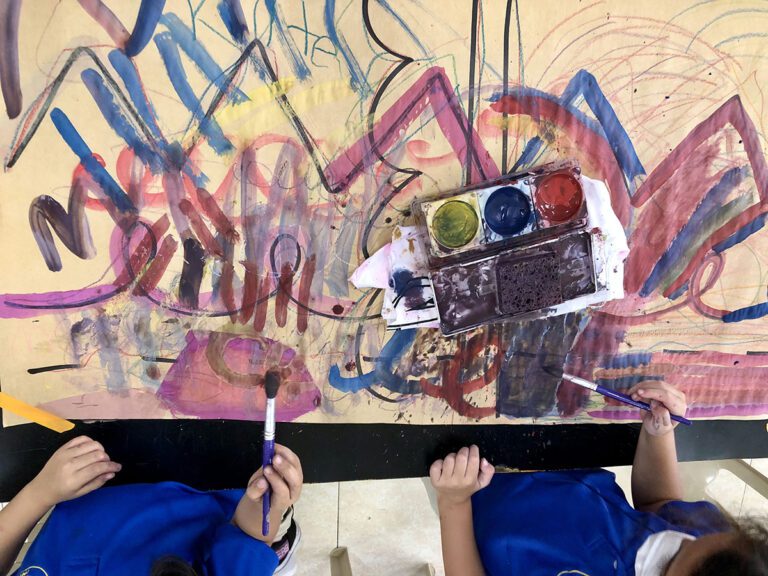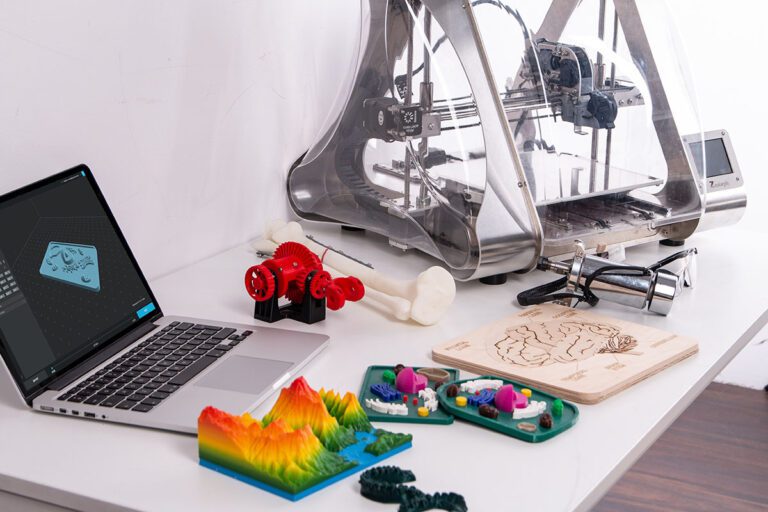Believe it or not, mathematics and the arts have always gone together. While we fight a myth of whether we are right-brained or left-brained, it’s important to recognize that these two disciplines have historically coexisted. Take a moment to examine the use of multiple perspectives in Renaissance art or the intricate tessellations and impossible objects created by M.C. Escher. The connection is visible in contemporary art as well. While you could easily teach a year-long course on the connections between math and art, let’s focus on four one-day challenges you can use to bring math into your art room. You may be surprised by how much you already teach mathematical skills!
1. Use a grid to make a collaborative mural.
While the grid method may be dry, it is a simple way you already incorporate math in your curriculum. Students employ basic arithmetic to scale an image to the size they want. They render more accurately by focusing on each grid block one at a time rather than attempting to recreate an entire image at once.
Challenge students to precisely render an image to double its size. They might find a gridded image online, or you can teach them how to draw their grid on an original photograph or one pulled from a magazine. While students work on their practice rendering, grid out an image and cut it into squares. Give each student a cut square reference along with a larger square piece of paper. Have students recreate their reference on the larger square. As students finish, assemble all of the individual drawn squares into one large collaborative mural.
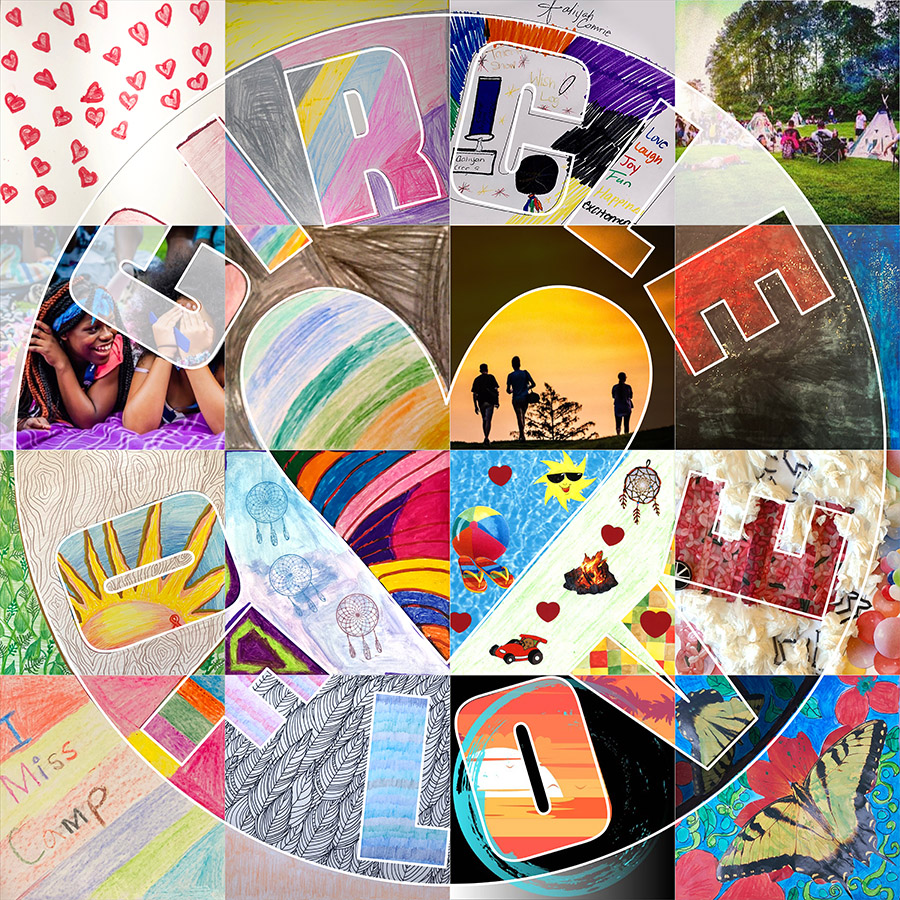
Are you wondering what this project might look like at the grade level you teach? Here are examples of elementary and middle school projects and the (no name) Art Group’s collaborative 2020 piece.
2. Try curve stitching.
Curve stitching is a technique very similar to string art that can be traced back to the mathematician Mary Everest Boole, who pioneered the technique in the mid-1800s. Curve stitching is a technique used to create parabolic curves with straight lines. It uses string stitched through paper at specific increments. It is a quick way to engage students with math because it makes striking and simple imagery.
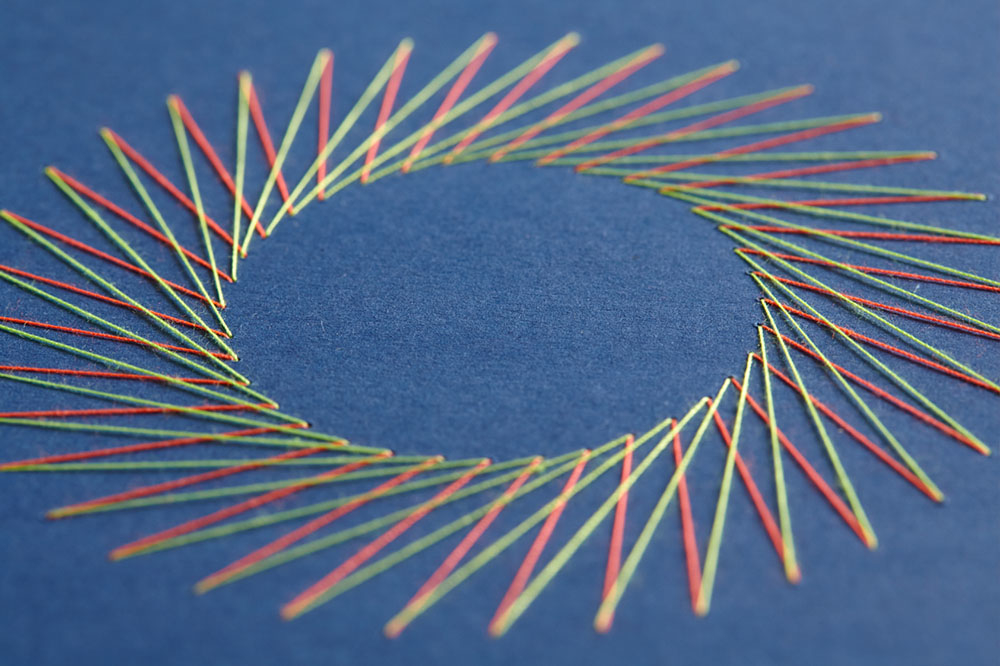
While traditionally done with string, you can also create these curves by drawing with a ruler on paper. Depending on your students’ abilities, you may want to provide templates for them to follow. To add some individuality, encourage students to try different ink colors as they draw. If your students are more advanced, challenge them to create designs that use obtuse angles, acute angles, or employ radial symmetry.
3. Apply the golden ratio in a photo hunt.
A Fibonacci sequence is a series of numbers where each number is the sum of the two prior numbers. Take the image below for example:
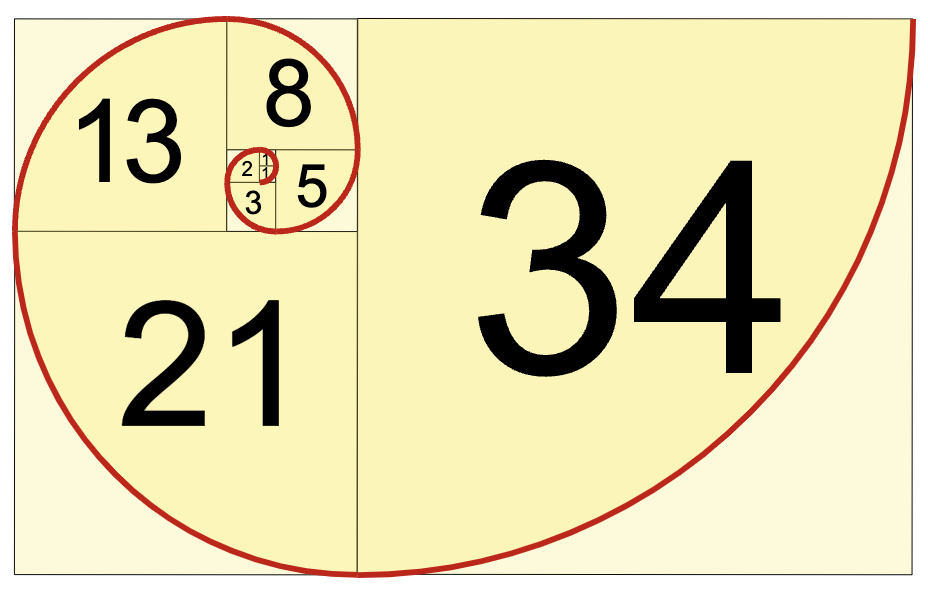
The Fibonacci sequence is also depicted visually in a few different ways. The most common is the golden, or Fibonacci, spiral. While a mathematical phenomenon, it’s also hard-wired into the human brain to prefer images that fit the golden ratio. Because of that, the golden ratio is a useful tool to have when it comes to designing artistic compositions.
Introduce students to the golden ratio and its various visual depictions. Next, send students out on a photo hunt. Prompt them to return with photographs that utilize the golden ratio in their composition. If a photography scavenger hunt is not possible, students can find pictures in magazines that fit the golden ratio. They can cut them out and attach them in their sketchbooks. Students complete a short reflection explaining how each found image meets the golden ratio to wrap up the activity.
Download our What is the Golden Ratio? handout to introduce the golden ratio. Find more math-related resources in our Math and Art Pack in PRO Learning.
Download Now!
4. Compose an orthographic drawing to isometric projection.
This is a fun challenge for more advanced students who have excelled in perspective drawing or enjoy puzzles. An orthographic drawing depicts a three-dimensional object with multiple two-dimensional views of the object. Typically, it is the top, front, and side view. Isometric projections depict an object in three dimensions, showing only three sides. You can use orthographic drawings to create an isometric projection.
Practice this shift from drawing to projection as a class. Demonstrate how to use the orthographic drawings to guide the perspective projection accurately. Then show one orthographic drawing of an object and have the class work in small groups to attempt an accurate isometric projection. If there is still time, have students break into pairs and tackle an orthographic drawing set that you assign to them. See which pair can finish the fastest with the most accuracy! After mastery of isometric skills, students can use them as a base for designing their isometric illustrations.
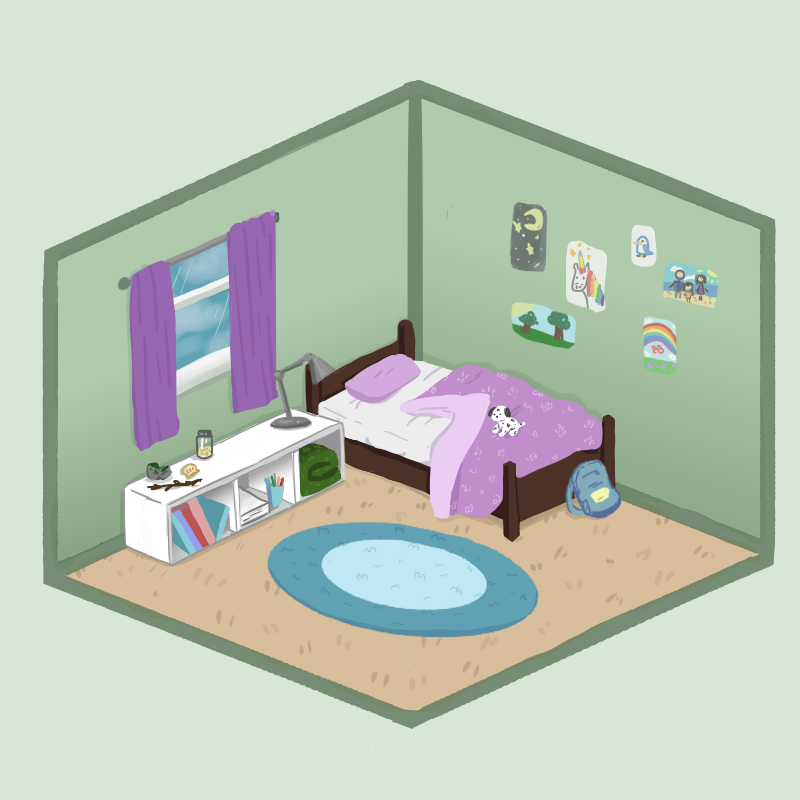
Let’s address 3 lingering questions you may still have:
- Are you nervous about creating your own orthographic drawings?
Don’t be! There are plenty on the internet for you to use. - Do your students understand and enjoy the challenge but struggle with the isometric perspective?
Give them some isometric graph paper to help improve their accuracy while they learn. - Do your students want to challenge themselves further?
Have them design their own orthographic challenges for their classmates.
Often art teachers are asked to make space in our curriculum to cater to other core content areas. Sometimes ignored is that no academic discipline exists in a vacuum; they are all intertwined. By looking at ways we already teach mathematical concepts in our classroom, the art curriculum can intrigue students who may not consider themselves “artists.” It breaks down barriers students may have set up between art and other disciplines. It also makes math more approachable to art-minded students. Connections like these are what teaching is all about!
For more one-day lessons, check out these links!
Do you want to dive deeper into some more AOEU resources? Check out these Collections in FLEX Curriculum:
- Advanced Math Concepts
- Connecting Op Art and Math
- Perspective
- Integrating STEAM
- Introducing Coding with Art
And don’t forget to watch the Math and Art Pack as well by heading over to PRO Learning.
What are two ways you already integrate math concepts in your curriculum?
What is the most effective way to engage more logical learners in your classroom?
Magazine articles and podcasts are opinions of professional education contributors and do not necessarily represent the position of the Art of Education University (AOEU) or its academic offerings. Contributors use terms in the way they are most often talked about in the scope of their educational experiences.

